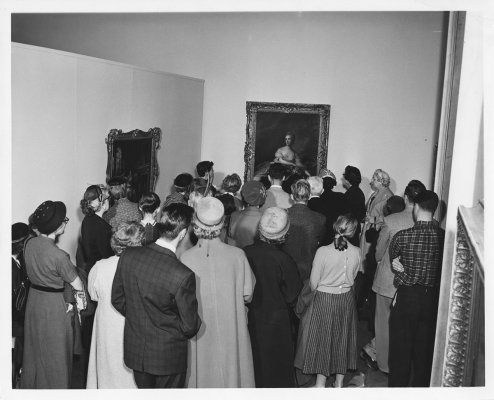From October 2 to November 4, 1957, the Albright Art Gallery hosted Trends in Painting: 1600–1800, a collection of approximately 35 paintings from the 17th and 18th centuries that were loaned by museums, dealers, and private collectors. The exhibition was conceived as a survey of the era during which the foundations were laid for the artworks that made up the Albright Art Gallery’s collection of works from the 19th and 20th centuries.
The October 1957 Members’ Bulletin describes the exhibition as follows:
“In the present day and age of high insurance costs, of skyrocketing values on paintings, and of increasingly strict lending policies on the part of museums, ventures into the field of ‘old master’ exhibitions are close to impossible for a museum such as the Albright Art Gallery. In Buffalo, unfortunately, because of the very limited collection of paintings from the years antedating 1800, gallery goers rarely have the opportunity to see paintings of the earlier periods, except on their travels elsewhere.
Although it would obviously be impossible to cover such an enormously rich field as the 17th and 18th centuries in such an exhibition as this, a number of the most important trends in painting are touched upon—the realism of Caravaggio, seen in his own work and in the Le Nain brothers, Georges de La Tour and Ribera; the baroque as represented by Rubens; and classicism by Poussin. Portraiture is briefly surveyed in the work of El Greco, Velazquez, Hals and Rembrandt; and in landscape, Claude Lorrain’s classicism may be contrasted with the romantic approach of Rosa, and the realism of Ruisdael and Hobbema.”
